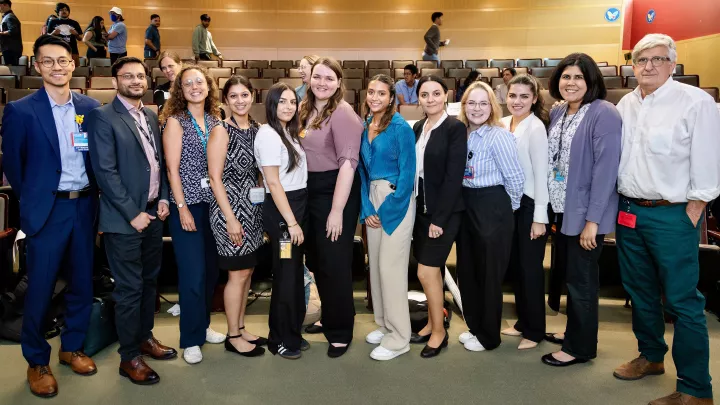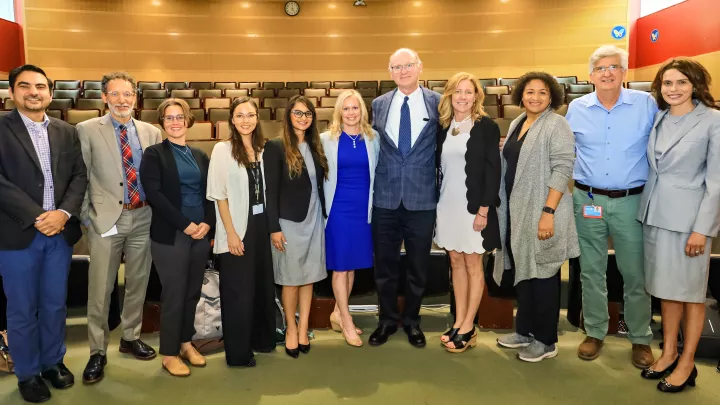
Anna Kamitakahara, PhD
Dr. Kamitakahara received her PhD in Neuroscience at the University of Southern California where she studied the development of hypothalamic circuits controlling homeostatic regulation of blood glucose and feeding behavior. She then went on to complete a postdoctoral fellowship at Children’s Hospital Los Angeles where she examined the development of vagal motor circuits and their responsiveness to loss of the MET receptor tyrosine kinase. Dr. Kamitakahara’s independent research program now focuses on understanding the functional organization and perinatal development of vagal sensory and motor neurons that connect the brain and the gut.
Education
PhD, University of Southern California
Publications
Kamitakahara, A.K., Ali Marandi Ghoddousi, R., Lanjewar, A.L., Magalong, V.M., Wu, H-H., Levitt, P., (2021) MET Receptor Tyrosine Kinase Regulates Lifespan Ultrasonic Vocal Communication and Vagal Motor Neuron Development. Frontiers in Neuroscience. 2021 Nov 4;15:768577.
Davis, E.A., Wald, H.S., Suarez, A.N., Zubcevic, J., Liu, C.M., Cortella, A.M., Kamitakahara, A.K., Polson, J.W., Arnold, M., Grill, H., de Lartigue, G., and Kanoski, S.E., (2020) Ghrelin signaling regulates feeding behavior, metabolism, and memory through the vagus nerve. Current Biology. 16;30(22):4510-4518.e6, 2020.
Kamitakahara, A.K., Bouyer, K., Wang, C., Simerly, R., A Critical Period for the Trophic Actions of Leptin on AgRP Neurons in the Arcuate Nucleus of the Hypothalamus. (2018) Journal of Comparative Neurology. 526(1): 133-145, 2018.
Kamitakahara, A.K., Wu, H-H., Levitt, P. (2017) Distinct Projection Targets Define Subpopulations of Mouse Brainstem Vagal Neurons that Express the Autism-Associated MET Receptor Tyrosine Kinase. Journal of Comparative Neurology. 525(18), 3787-3808.
Kamitakahara, A., Xu, B., & Simerly, R. (2016). Ventromedial hypothalamic expression of Bdnf is required to establish normal patterns of afferent GABAergic connectivity and responses to hypoglycemia. Molecular Metabolism, 5(2), 91–101.
Liao, G.-Y., Bouyer, K., Kamitakahara, A., Sahibzada, N., Wang, C.-H., Rutlin, M., et al. (2015). Brain-derived neurotrophic factor is required for axonal growth of selective groups of neurons in the arcuate nucleus. Molecular Metabolism, 4(6), 471–482.
Research
The brain and the gut are inextricably linked. This is evident in the way stress can leave you with the feeling of butterflies in your stomach (descending pathways affecting the gut), as well as in the way that your gut signals the feeling of fullness after a meal (the internal state being relayed to your brain). Research in the Kamitakahara Laboratory investigates the development of the vagus nerve that serves as a major conduit for this information communicated from the gut to the brain and vice versa. Specifically examined is the impact of early life stress or perinatal nutrition on vagal circuit growth, connectivity, and function. Mechanistic understanding of vagal gut-brain axis development is probed using advanced techniques such as single cell RNA sequencing, highly multiplexed in situ hybridization, and intestinal organoid culture. Through delineation of the signals that guide vagal development as well as the vulnerabilities presented by perinatal stress and nutritional environment, research in the Kamitakahara lab aims to understand how to best support healthy brain development.
4661 Sunset Blvd
Los Angeles, CA 90027
United States

